Around the city
“Do not turn to the right or the left; keep your foot from evil” (Proverbs 4:27, NIV).
1. Listen to the story and answer the question. Where is Beth’s new house?
Camille: Why are you putting your books in boxes, Beth?


Beth: Because we’re moving to a new house soon.
Camille: Oh, really? When?
Beth: Next week.
MUESTRA

Camille: Oh, no… Are you moving far from this place?
Beth: No, I’m not. The new house is two blocks from here. Camille: That’s good! It’s near!


Camille: Where is the new house?
Beth: Go straight on. Cross Hill Street. Go past the square and turn right on to Queen’s Street. Go straight on. Cross Fourth Street. It’s the house opposite the bus station.
Camille: Oh, I think I know where the house is. My cousins live on that street, too.
Beth: That’s right!
Camille: I’m telling them the news tonight!
8 · CHAPTER 1 Around the city 1
a.
c.
TRACK 2
b. d.
aeoda.net/824
Material
o
exclusivo para docentes (c) 2023 ACES Educación. Prohibida su reproducción
distribución en ningún formato físico o electrónico.
2. Say if the statements are “T” (true) or “F” (false).
a. Beth is moving to a new house now.
b. Beth is not moving far.
c. Camille lives on Queen’s Street.
d. Camille’s cousins live near Beth’s new house.
3. Answer the questions.
a. Why is Beth putting her books in boxes?
b. When is Beth moving to her new house?
c. Is Beth’s new house far from her old house?
d. What is Camille doing tonight?
4. Read the story on page 8 again. Mark Beth’s new house with an “X”.
5. Put the events in the correct column. Underline the expressions of time.
a. Camille is visiting Beth now.
b. Beth is moving to a new house next week.
c. Beth and Camille are talking about the new house at the moment.
d. Camille is telling her cousins about Beth’s new house tonight.
CHAPTER 1 Around the city · 9
Actions happening now Actions happening in the future Queen’s Street Hill Street Fourth Street Hill Street Main Street Main Street Queen’s Street Car park School Supermarket Beth’s house Restaurant Bus station Square Hospital Pet shop Gas station MUESTRA
Material exclusivo para docentes (c) 2023
ACES
Educación. Prohibida su reproducción o distribución en ningún formato físico o electrónico.
In the city
1. Listen and complete the gaps with the words in the box.
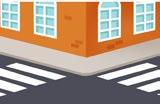
street – car park – city centre – traffic light – bus station – square – bus stop –underground – roundabout – motorway – gas station – corner
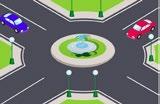

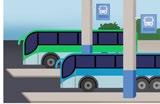
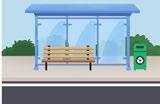
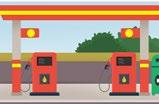
2. Choose the correct option.
a. We can meet at the roundabout / corner of Mill Street and First Street.


b. The speed limit on squares / motorways is 70 miles per hour.
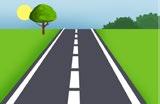



c. My dad always takes the underground / traffic light to go to work.
d. Many shops in the roundabout / city centre close at 6:00 in the afternoon.
3. Complete the sentences with words in the box. There are extra words.
a. I go to school by bus. I take it at the opposite my house.
b. Our school is on Mill
c. You can get to the city centre faster when you take the
d. Stop! The are red.
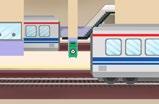
10 · CHAPTER1 Around the city Language Knowledge LK
Vocabulary Builder, p. 121
WB, p. 129 TRACK
3
Street – traffic lights – car park – bus stop – motorway – bus station a. e. i.
g.
aeoda.net/823
Material exclusivo para docentes (c) 2023 ACES Educación. Prohibida su reproducción o distribución en ningún formato físico o electrónico.
b. f.
c. g. k. d. h. l.
MUESTRA
Talking about the present
1. Read the sentences and write “C” if you think they describe a city or “T” if they describe a town. Then read the text to check your answers.
a. A place where 10,000 people live.
b. This place has governmental powers.
c. Here, many people know each other.
d. Inhabitants travel long distances to go to work, school, etc.

Cities and Towns
Do you know the difference between a city and a town? Many people think they are the same thing, but in truth, they are not. Definitions of each place vary from country to country, but here is some information that can help you understand their differences.

In general, a town has between 2,500 and 20,000 inhabitants. When a place has less than 2,500 people, it is called a village. A city has more than 20,000 inhabitants.
In cities, many people take the train or the bus at 5 a.m. every morning to go to work. Towns do not hold governmental powers.
Towns are small. Generally many inhabitants know each other. Cities have big and organised systems for housing, transportation, education, communication and sanitation.
2. Read the sentences which are par t of the text above, and say if they talk about facts “F” or habitual actions “H”.
a. Many people take the train or the bus at 5 a.m. every morning.
b. Towns do not hold governmental powers.
c. Cities have big and organised systems.
3. Complete the sentences using the verbs in the simple present.
a. My city 50,000 inhabitants. (have)
MUESTRA
b. My neighbours their car in a car park. (not leave)
c. he in England? (study)
d. you to the square at weekends? (go)
4. Pair work. Ask each other two questions about your habitual actions during the weekend.
What do you usually do on Sundays? I go to the Green Planet Club.
Useful tip!
We use the simple present to talk about facts. Many young people leave towns to live in cities.
We also use the simple present to talk about habitual actions and routines. They go to work very early in the mornings.
I live in Caracas. She lives in Wales. They don’t walk to school. He doesn’t take the underground. Do you live near the bus station? Does she work in the city centre?
Grammar Reference, p. 113
WB, p. 130
CHAPTER 1 Around the city · 11 LK
Imágenes: © TierneyMJ, Sean Pavone | Shutterstock
Material exclusivo para docentes (c) 2023 ACES Educación. Prohibida su reproducción o distribución en ningún formato físico o electrónico.
Describing activities happening now
TRACK
4
1. Listen and choose the correct option.
a. Beth and her family are putting / aren’t putting their things in boxes.
b. Camille is texting / isn’t texting her cousin.
c. I ‘m driving / ‘m not driving on the motorway.
d. The boys are playing / aren’t playing in the square.
2. Complete the sentences with a verb in the box in the present continuous.
aeoda.net/825


Useful tip!
not watch – travel – enter – play – not run – not wait
a. I am entering the roundabout.
b. The girls are happy. They tennis now.
c. She a film at home. She’s at the cinema.
d. He’s late, and he very fast.
e. I for you at the car park. I’m at the gas station.
f. There are a lot of people on the underground. They to work in the city centre.
TRACK
5
3. Listen to the dialogues and answer the questions.


a. Is Camille helping Beth?
b. What are the girls doing?
c. What is Alison doing now?
a. (your teacher / talk) Is your teacher talking? No, she isn’t.
b. (your neighbours / sing)
c. (what / she / write)
d. (where / we / go)
d. What is Joe doing?
We use the present continuous to talk about actions happening now. They are repairing the street. She is walking./They are running She isn’t running./They aren’t running
Is she running?/Are they running?
Grammar Reference, p. 113
aeoda.net/826
e. Are David and his sister doing homework?
f. Where is Peter walking to?
4. Make questions with the prompts given. Use the present continuous. Then answer the questions with your own ideas.
MUESTRA
e. (where / he / swim)
5. Pair work. Play “Guess where?”.
I’m driving fast. Where am I?
On the motorway.
12 · CHAPTER1 Around the city Language Knowledge LK
WB, p. 131
Material exclusivo para docentes (c) 2023 ACES Educación. Prohibida su reproducción o distribución en ningún formato físico o electrónico.
Future arrangements
1. Look at the text messages and complete the sentences below.
Useful tip!
We can use the present continuous to talk about future arrangements.
We are meeting tomorrow at 6:00. They are arriving in three hours. I am travelling to Italy on Tuesday.
Hey, are you going anywhere tomorrow afternoon?
Yes, I am.
Where are you going?
I’m going to the square with some friends. Do you fancy coming with us?
Perhaps…
What time are you going?
We’re meeting there at around 3. Dad is picking us up at 6.
I can’t make it at 3. See you there at 4!
a. David is meeting his friends tomorrow afternoon. (meet)

b. The boys in the square. (meet)
c. Joe at 4:00 p.m. (go)
d. David’s dad at 6:00 p.m. (pick up)
6
2. Complete the sentences with the words you hear. Then listen again and check.
a. They can’t find their pet
b. The supermarket is closed, but we can buy the fizzy drinks else.
Useful tip!
Compounds: some, any, no, every. Places:
aeoda.net/827

MUESTRA
Somewhere: unknown or undetermined place (affirmative sentences).
c. This place is unique. It exists else in the world.
d. I take my phone I go.
3. Pair work. Ask each other the following questions and answer them.
a. Are you doing anything special this weekend?
b. Is there anywhere you want to go on Sunday evening?
c. What are you doing there?
d. Is anyone from your family going with you?
WB, p. 132
Anywhere: a place (negatives sentences and questions).
Nowhere: not anywhere.
Everywhere: all places.
CHAPTER 1 Around the city · 13 LK
Grammar Reference, p. 113
TRACK
Imagen: © Artem Mashchenko| Shutterstock
David David is typing
Material exclusivo para docentes
(c) 2023 ACES Educación. Prohibida su reproducción o distribución en ningún formato físico o electrónico.
Giving directions
1. Fill in the gaps with the words in the box. There is an extra word.
go – turn – left – past – right – second – take
a. Go
Turn
straight on.
2. Look at the map and complete the dialogues.
a. A: Hello. I’m at the supermarket. How can I get to the ?
B: Go straight on. Go past the traffic lights. There’s a bank on the right. Go past it. It’s the place next to the bank.
b. A: Hi. We’re at the bus station. How can we get to the ?
B: Go straight on until you get to the roundabout. At the roundabout turn right. There’s a restaurant on the corner of Queen’s St. and Main St. The place is next to the restaurant.
7
3. Listen to the dialogues and follow the directions on the map above. Where are the people going?

a. The young boy is at the supermarket. He is going to the
b. The woman is at the underground station and is going to the
4. Pair work. Ask each other for directions to go to different places. Use the map above.
WB, p. 133
14 · CHAPTER1 Around the city Language Knowledge LK
d.
b.
e. left.
c. Take the left.
f. the second right.
TRACK
Imágenes: © Orca | Shutterstock aeoda.net/828 Queen’s Street Hill Street Fourth Street Hill Street Main Street Main Street Queen’s Street Car park School Supermarket Beth’s house Restaurant Bus station Square Hospital Pet shop Gas station Bank Library Beth's new house Shopping centre Underground station Bus stop
Builder, p. 121 MUESTRA Material exclusivo para docentes (c) 2023 ACES Educación. Prohibida su reproducción o distribución en ningún formato físico o electrónico.
Vocabulary
su
A note to make arrangements
1. Read the note and label the different sections with the phrases in the box.
invitation – closing lines – greeting – the place to meet
(a) Hi Josh,
Do you have plans for the weekend? My cousins are coming to town on Sunday morning and they want to spend the day outdoors. (b) Would you like to go to the beach with us?
(c) We can meet at the bus stop on the corner of Hill St. and Green St. We want to go to Brava Beach because it’s near my house. What do you think?
(d) See you soon, Peter
2. Read the response note and find the information below. Underline it in the text.
Hello Peter, Thank you for the invitation! I’d love to go. I think a day at the beach is an excellent plan. What are you taking for lunch? can prepare sandwiches and bring some snacks. Is that OK? What time shall we meet?
See you on Sunday, Josh
a. Asking about the time to meet.
b. Giving an opinion about the plan.
c. Accepting the invitation.
3. Write a note to a friend using the ideas in the parentheses.
(a) (greeting)
Do you have plans for (b) (when) ?
It’s going to be sunny and warm. (c) (make an invitation) ?
We can meet (d) (say where)
I think we can have a very good time there! See you soon,
(e) (your name)
CHAPTER 1 Around the city · 15 WB, p. 134 Language Knowledge: Skills LKS
a.
b. c. d.
Imagen: © nishio| Shutterstock MUESTRA
Material exclusivo para docentes
(c) 2023 ACES Educación. Prohibida
reproducción o distribución en ningún formato físico o electrónico.
Directions to Heaven
“Do not turn to the right or the left; keep your foot from evil” (Proverbs 4:27, NIV).
1. Read the text and circle the correct answer to the question.
What is the main idea of the text?




a. To describe reasons to ask for directions.
b. To teach a spiritual lesson.
When do we usually ask for directions? Typically, we ask other people for directions to a place when we do not know how to get there, or when we want an alternative route to the one we are taking. In any case, we ask for directions, a person tells us the way, we follow those directions, and then we arrive at our destination. Simple, right? Now, what happens when we do not follow the instructions? We get lost. Consider for a moment a destination that is far more important than any place on this earth. Think about the way to go to Heaven. When we read our Bible, we find many “directions” to go to our eternal home. The most relevant and basic of these directions is the one that Jesus himself gave: “I am the way” (John 14:6). In other words, Jesus is saying: “Follow me because I am the only path to our Father in Heaven.” One day, Jesus will come to this earth again to take his children to Heaven. In the meantime, walk with Jesus every day, enjoy his company and trust his ways are the best.
2. Order the events when we ask for directions.
a. We arrive at our destination.
b. Someone tells us the way.
c. We ask for directions.
d. We follow the directions.
3. Read and think about the answer to the question. Then write your ideas.
In John 14:6, Jesus said “I am the way”. In other words, Jesus is saying: “Follow me because I am the only path to our Father in Heaven.” What decisions should I take every day to follow Jesus?
Example: I should read the Bible
4. Complete the directions to get to Heaven with the phrases in the box.
don’t turn left – go past – go straight on – see
a. to Jesus in prayer, open your Bible and meditate on it.
b. Listen to God’s instructions and or right (to avoid getting lost).
c. temptations.
d. Soon, you will your destination in front of you.
5. Pair work. Discuss the following question and write your ideas below.
What things would you like to do in Heaven?
16 · CHAPTER1 Around the city
• • • • Imagen: © Vectorfair.com | Shutterstock PK Profound Knowledge
MUESTRA
Material exclusivo para docentes (c) 2023 ACES Educación. Prohibida su reproducción o distribución en ningún formato físico o electrónico.
Self-assessment
1. Unscramble the words underlined.
a. She lives on Great eSrtte.
b. Take the first left at the aroubondut.
c. They always hang out in the asqure.
d. Traffic is heavy at this hour on the owtomray.
e. Let’s take the uderdgrounn.
f. I’m at the sub atstion.
2. Complete the sentences with the words in the box. Use the present continuous.
drive – do – walk – not explain – listen – not meet
a. She to the bus station now.
b. The teacher a new topic.
c. I feel ill. I Jason this afternoon.
d. Slow down! You very fast.
e. What she ?
f. you to me? You look distracted.
3. Use the verb in the simple present or the present continuous.
a. She always (go) to school by bus.
b. The Smiths (arrive) tomorrow morning.
c. I (not drive) now.
d. We (not own) a car.
e. What you (do) this weekend?
f. Where your uncle (live)?
4. Choose the correct word.
a. I don’t go anywhere / everywhere without my phone.

b. We can’t walk to the city centre. It’s very far / near
c. This traffic jam is terrible! There are cars everywhere / nowhere
d. The dog is near / anywhere. I can hear it barking.
e. I’m looking for somewhere / nowhere to eat.
f. Oh, no. We have nowhere / near to stay.
5. Look at the map and complete the instructions.
From the gas station to Beth’s new house: Go (a) on and take the (b) right on to Fourth (c) . There’s a square on the left. Go (d) it and (e) right. (f) past the pet shop. Beth’s house is (g) to it.
From the library to the square: (h) straight on and (i) Hill Street. Go past the (j) . The square is next to it.
Worksheet 1
My progress: I can...
Use words about cities. Talk about the present.
Describe activities happening now. Refer to location.
Make future arrangements. Give directions.
CHAPTER 1 Around the city · 17
Revision R
Queen’s Street Hill Street Fourth Street Hill Street Main Street Main Street Queen’s Street Car park School Supermarket Beth’s house Restaurant Bus station Square Hospital Pet shop Gas station Bank Library Beth's new house Shopping centre Underground station Bus stop MUESTRA
aeoda.net/829
Material exclusivo para docentes (c) 2023 ACES Educación. Prohibida su reproducción o distribución en ningún formato físico o electrónico.

























